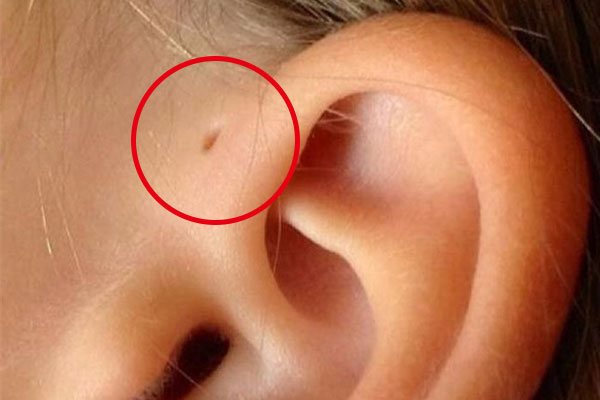Preauricular sinus

A preauricular sinus, also known as an auricular fistula, is a common congenital malformation that occurs during the development of an embryo. It results from incomplete fusion of the first and second branchial arches and is characterized by a small hole located anywhere adjacent to the external ear, toward the face. Preauricular sinus is more often unilateral, only occasionally are bilateral forms inherited.
Most preauricular sinuses do not cause symptoms. The disease is frequently asymptomatic. Patients with preauricular sinuses usually seek no medical attention.
When they become infected with swimming, washing hair, producing excess sebum, they may be swelling and pain, fluid or pus drainage. When there is any accumulation of sebum, it may build up a bad odour and discharge secretions. When it infected, there will be inflammation, swelling and pus. Doctor will, depending on the patient’s condition, prescribe some anti-inflammatory drugs, such as antibiotics, to reduce inflammation. After taking antibiotics, a surgical excision of preauricular sinus can be performed if the infection is still present. If, however, the inflammatory responses remain after taking antibiotics or swelling, redness and pus that develop around the area, the surgical incision is needed to have pus drain out.
The preauricular sinus excision can be performed under local anaesthesia or general anaesthesia. When a child has the operation, a surgeon may recommend general anaesthesia. The surgeon will inject contrast agent to demonstrate the sinus tract at surgery. The dimple, fistula and part of the auricle cartilage will all be removed, reducing postoperative recurrence. The patient can go home on the same day of the operation. Furthermore, there will not be visible scars after surgery.
*The above information is for reference only, please consult your doctor for detail.

 3405 8288
3405 8288
